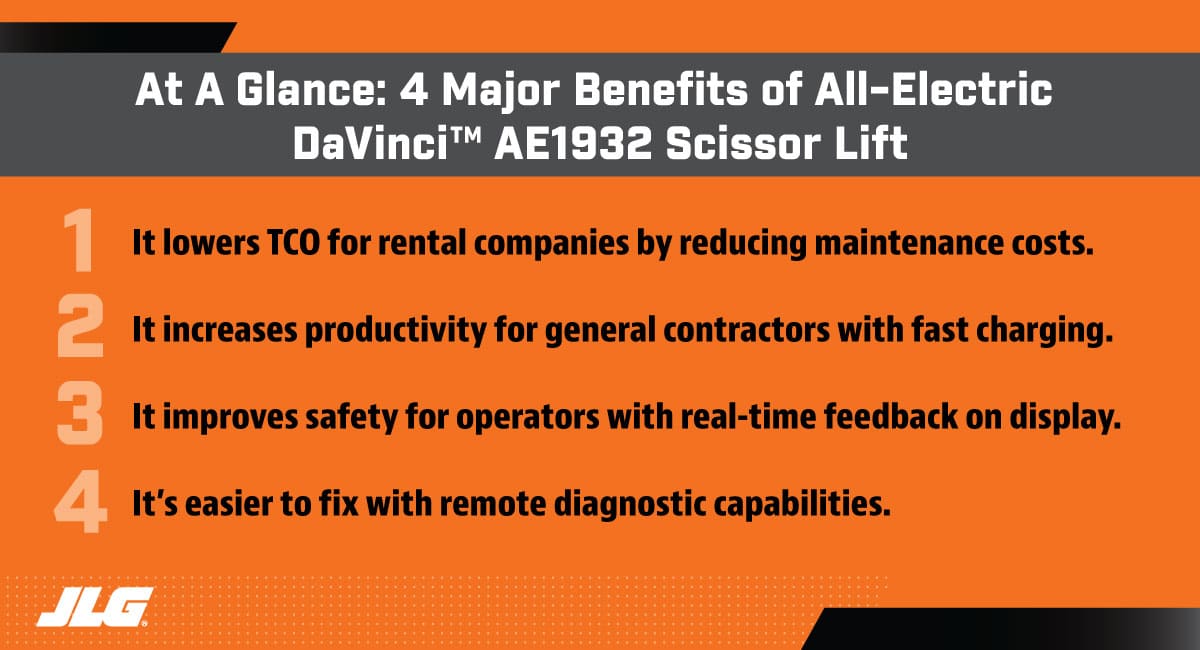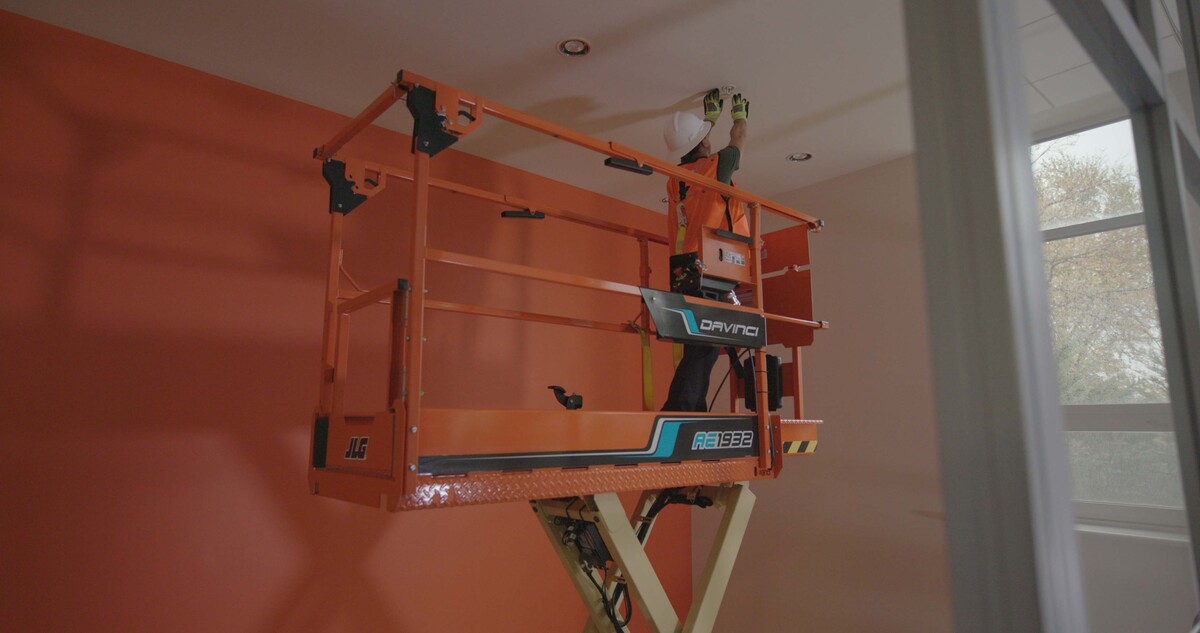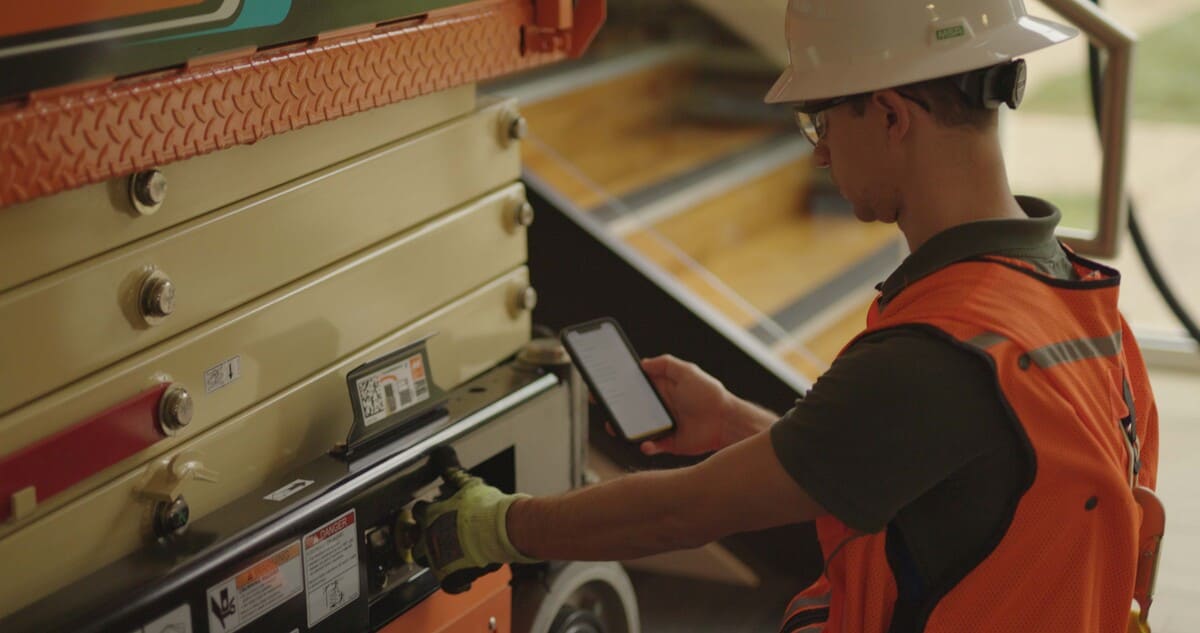Confession time: Designing new electric scissor lifts has often focused on the feedback from only a few key customers.
It’s not that input from others in the access equipment ecosystem wasn’t considered; it’s just that it wasn’t prioritized, says Shashank Bhatia, director of engineering for MEWPs at JLG.
 “We've always designed these machines to what we think the specs of the machine need to be and how we can be the best at all the specs,” Bhatia says. “We have now shifted and put a lot of emphasis to include getting broad-based customer input.”
“We've always designed these machines to what we think the specs of the machine need to be and how we can be the best at all the specs,” Bhatia says. “We have now shifted and put a lot of emphasis to include getting broad-based customer input.”
Bhatia describes this shift in JLG’s product development as customer-inspired innovation.
This involves going beyond rental companies, who are the primary customer for access equipment manufacturers, and listening to others across the access industry ecosystem.
“The ecosystem spans from rental companies to general contractors to end users,” Bhatia says. “So we got input from all three of them.”
The major objectives and problems of each segment varied greatly, calling for a ground-breaking solution.
Enter the AE1932 all-electric scissor lift, the first in JLG’s new DaVinci™ series.
Here are four ways this reimagined 19-ft. (5.8 m) lift addresses the needs of rental companies, general contractors, and operators.
It Lowers Total Cost of Ownership for Rental Companies
The biggest concern for rental companies that own access equipment is the total cost of ownership (TCO), Bhatia says.
“They want to make sure that they buy this equipment at the best price possible, and they want to spend the least amount of money to keep it running,” he says. “And when they plan to resell the machine, it should get them the best value possible.”
In order to keep TCO low, rental companies need to look for ways to reduce maintenance costs. The most-expensive MEWP components to maintain are engines and flooded-lead acid (FLA) batteries.
The most-expensive MEWP components to maintain are engines and flooded-lead acid (FLA) batteries.
One way to resolve this is to shift the power source to lithium-ion batteries, which last much longer than FLA batteries and do not require watering or other maintenance.
Lithium-ion batteries bring a higher upfront investment though, so how can this be offset?
Make everything electric, Bhatia says.

“For us to have these lithium-ion batteries last the life cycle of the machine, we need to change the other components of the machine, which means that the rest of the system also needs to be electric,” he says.
With the DaVinci™ series, the lithium-ion battery is expected to last 120-months, well beyond the average time that a rental company keeps a new MEWP in its fleet, which is five to seven years.
Its all-electric components also reduce the number of parts on the machine that require service.
With zero hydraulics, it eliminates the risk of costly, damaging leaks and the need for diapers.
Bhatia says this will be the standard for electric scissor lifts moving forward.
“In the future, we believe that not only the powertrain needs to be electric, but every functional system of the machine needs to be electrified,” Bhatia says.
He says that all-electric scissor lifts will lower the overall TCO by 30-40%, a figure arrived at by reviewing thousands of rental company maintenance records and Rouse resale values compared to the expected parts replacements and operational benefits that DaVinci™ models will bring.
It Increases Productivity for General Contractors
One of the most important considerations for general contractors in selecting access equipment is productivity, Bhatia says.
From their perspective, they need electric scissor lifts, which are ideal for indoor jobs, that are dependable and ready to work.
“It should keep the people in the platform productive all the time,” Bhatia says.
But at any given time in a work area, many electric scissor lifts on a site are completely useless — literally tied up, waiting to get power.
“Today’s machines only work one shift because the second shift they are charging,” Bhatia says. “It takes eight hours to fully charge a machine.”
New advancements in fast, high-power charging have accelerated charging capabilities to under two hours in the DaVinci™ series.
New advancements in fast, high-power charging have accelerated charging capabilities to under two hours in the DaVinci™ series.
“We also added something called opportunity charging,” Bhatia says.
This means that as little as 20 minutes of charging can provide a couple hours of power to complete a task on a job.

With the DaVinci™ series, energy is also recovered when an operator lowers the platform. This reduces power consumption by 70% compared to a typical electric scissor lift, which means each charge of the machine lasts longer.
Other ways that the AE1932 improves productivity include offering a 606-lb (275 kg) platform capacity, which is 20% more than the average 19-ft model, increasing lift capacity by 30%, and featuring QuikFold rails as standard.
It Improves Safety for Operators
For access equipment operators, safety is a top priority.
“When the person in the platform is up 150 ft (45.7 m), the first thing on your mind is ‘Am I safe?’” Bhatia says.
Most MEWPs today include lights and alarms to warn operators of potential hazards. The operator then has to understand what the alert means, and even so, they may not know the exact nature of the problem.
“They don't have that instant feedback,” Bhatia says.
The DaVinci™ series features an optional LCD screen that tells operators the state of charge, how much load is in the platform, whether the machine is level, and how high the machine can elevate.
Bhatia says the screen shows the vital information that an equipment operator needs to easily make decisions while in the platform.
They don’t want machines that come with complicated control systems and other features they can't figure out, Bhatia says. So while we leveraged sophisticated technology, we’ve made it simple to use.
The display and control system simplifies operation of the MEWP, he says. Driving, steering, and loading/unloading can also be done through the JLG™ Mobile Control app, which comes standard with the AE1932 to reduce operator risks of performing those functions while in the platform.

It’s Easier to Fix
Downtime from a broken MEWP is problematic for all three customer segments.
“If the machine breaks down, it needs to be diagnosed pretty quickly,” Bhatia says.
This usually involves the service technician from the rental company or dealer coming out to the site to troubleshoot the problem, which can take hours or days. Then, once the problem is diagnosed, the technician needs to locate the right tools and parts to make the repair.
But the DaVinci™ series changes all that by reducing diagnostic time.
“With our new control system, you can remotely connect to the machine,” Bhatia says.
This means technicians can identify problems before arriving on site, so when they do, they’re ready to get to work.
This means technicians can identify problems before arriving on site, so when they do, they’re ready to get to work.
For rental companies and dealers struggling to find and retain service technicians, the remote connectivity capabilities of DaVinci™ allows them to tap into a wider network of qualified technicians available through the manufacturer to assist with troubleshooting or perform over-the-air software updates.
Service technicians can also connect to the machine on-site with the DaVinci™ Go app, which eliminates the need for an analyzer for diagnostics.
By solving the industry’s most common problems with access equipment, Bhatia believes the all-electric DaVinci™ series will quickly find its place as a go-to choice for working at height.
“In the next five years, these machines are going to be on the work site as regular machines,” Bhatia says.
Want to stay up to date with industry news and trends similar to this? Make sure you subscribe below to receive monthly updates from Direct Access with newly posted content so you never miss important information.